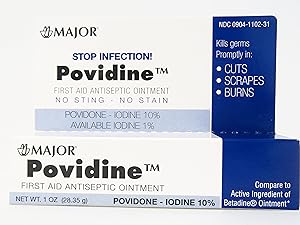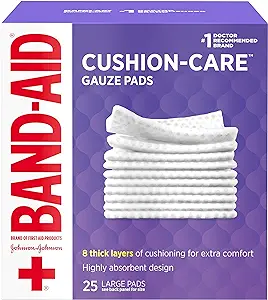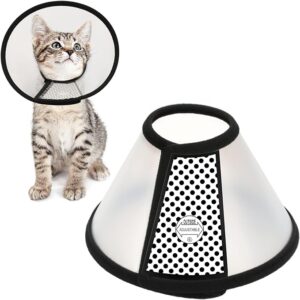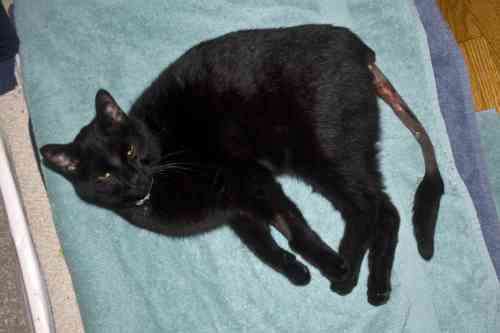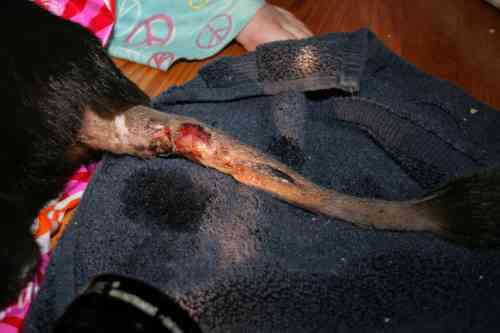My cat’s tail got cut off
What to do now
You must have been very shocked to see your cat come home with his tail got cut off. In this article we tell you first that it is best to take your cat to your vet immediately. We tell you what can happen if you don’t. We also explain what may have caused it and what other symptoms you might see when the tip of your cat’s tail was cut off. At the bottom of this page we also tell you the long-term consequences if the tip of your cat’s tail got cut off. But now first the explanation of how you can tell that the tip of your cat’s tail has got cut off.
What happens if a cat’s tail is cut off?
In most cases, it is quite obvious that the tip of your cat’s tail has got cut off. You will notice that the tail is (a lot) shorter than before and there is a wound at the end. In some cases, only the skin is torn off. In other cases, the skin as well as the muscles and tendons are lost. If that happens, the narrow, thin bones of your cat’s tail are still visible. It can bleed quite a bit, but in most cases the amount of blood is actually not too much.
What do you do if your cat loses his tail?
Immediately visit a vet!
In all cases, it is best to see your vet immediately if the tip of your cat’s tail has got cut off. So also in the evening or in the weekend. You’ll almost always find an emergency number on your vet’s website. Otherwise you just call them and hear it on a telephone tape. Your vet assesses whether the tip of the tail can heal without surgery. But in most cases, surgery is required to close the skin over the bone tissue again. Skin is elastic and will retract slightly further than the bone. The bone then is exposed from the wound and comes into contact with the open air. This way the bone is easily accessible for infections and that is really bad for the survival of your cat.
During surgery, a fresh wound will probably be made on 1 tail vertebra closer to the body. The skin is probably not damaged in that area, so the tail stump will have the greatest chance of healing without complications that way.
Can a cat’s tail heal on its own?
As we have written above, it is better to go to your vet in any case. However, we think it is important to at least tell you the minimum you should do if you are not able to go to your vet. Even though we hope you will choose the vet option. It really is the best!
The only chance for a cure is when there is no bone tissue exposed from the tip of your cat’s tail. Does the tail bone stick out and you don’t do anything about it? Then his bone will become infected. Then, after a week or so, he gets blood poisoning and dies a nasty death. So, is there a piece of tail bone exposed out of your cat’s tail stump? Then go to the vet anyway.
If there is no bone exposed from the remaining tip of your cat’s cut off tail, you should at least clean the wound with gauze compresses and clean water. If there is no clean tapwater in your area, then use bottled water or boil water for 10 minutes and let it cool down. All sand and dirt such as twigs or leaves must be removed. Then apply iodine ointment to the tip of his tail. Continue to repeat this 3 times a day for 7-10 days. After that time, the wound should be healed almost completely and the edges of the crust will start to loosen slightly. This is a sign that the wound is healing well.
In the meantime, make sure your cat can’t lick his tail. You can prevent this by providing him a protective collar. His tongue is really rough and the new formed skin on the tip of his cut off tail is vulnerable.
What complications should you avoid?
Under no circumstances should you notice that the wound is still moist after 2 days or that the scab does not stick firmly to the cut off tail. The moist is a sign that there is a wound infection. Your cat really needs a course of antibiotics so that his wound can heal and he does not get blood poisoning. And you only get this from your vet.
If you really want you can also use the following antibiotic cream, but it doesn’t penetrate deep into the wound of the cut off tail of your cat. An oral course of antibiotics of your veterinarian is in this case best.
How can you stimulate the healing of your cat’s tail?
If the tip of your cat’s tail has got cut off and you have been to the vet, he or she has probably operated the cut off tail of your cat. If not, your cat will be prescribed a course of antibiotics and a painkiller at least. This will allow your cat’s tail stump to heal in the coming weeks. You can further stimulate this healing by placing a warm cherry stone pillow against the stump of his tail. The heat causes the blood vessels in the tail to open up a little more, which will increase the blood supply to the wound. And with that increased blood supply, more healing substances will also be delivered to your cat’s tail stump. Place this cherry pit cushion on his tail for 3 times a day for 15 minutes.
In addition to a warm cherry stone pillow, it is also wise to rub the wound with honey ointment twice a day. According to a study by S. Melek et. al. ensures that bacteria and viruses can multiply even less in the wound and also has a cell division-stimulating, scar-reducing and anti-inflammatory effect.You can use this until the wound is completely healed. But usually about 7 days is also sufficient.
Cat tail cut off by door or was it something else?
It is very difficult to find out afterwards what exactly happened to your cat that caused the tip of your cat’s tail get cut off. But in most cases there is an accident involving a vehicle. In addition, the tail is also regularly stuck between a door. And don’t forget a dog’s jaws. If a dog bites your cat’s tail, the force of his jaws can bite the tip of your cat’s tail off. But your cat could also have pulled himself away in terror, pulling off the tip of his tail. But whatever the cause, it hurt your cat quite a bit!
What other symptoms do you see when the tip of your cat’s tail got cut off?
In addition to the fact that your cat’s tail has become a bit (or a large part) shorter, you may also notice the following symptoms in your cat:
- Pain (when touching) in the tail
- He keeps his tail lower than you are used to from him
- Your cat licks his tail stump a lot
- Plaintious meowing
- Walking around less
- Wanting to eat less
- Hide in a corner or some kind of cavity
- If the wound is a bit older, he may have a fever
When should your cat have a tail amputation?
If the damage to your cat’s tail is very extensive and bone tissue is visible, the risk of wound infections and bone infections is high. However, cats can have a great life if they are missing a large part of their tail. That is why the decision is made quite easily not to take any risks and to amputate the tail. The tail (or part of it) is surgically removed.
The remaining length of your cat’s tail stump depends on how far the skin is intact. In intact skin, the blood vessels are then able to properly supply the fresh wound (that your vet makes during the amputation) with healing nutrients. If the tail was amputated in a part where the skin is seriously damaged, the blood supply will be insufficient and the skin may then die off and a problem will arise again. That is why a vet often plays it safe and prefer to make the tail a little shorter. That’s better than having to operate again later. As an owner, you probably find that 3 centimeters shorter worse than your cat. He doesn’t care if his tail becomes 3 centimeters shorter than it already became due to the accident.
Can the tip of your cat’s tail fall off?
No, the tip of your cat’s tail can never just fall off. It is possible that your cat had a problem in his tail and the blood supply in the skin was no longer sufficient. In this case, the skin may die and eventually fall off. But then your cat has been licking and biting his tail for at least a week. And it was already causing him a lot of pain. You would have really noticed that. Spontaneously, from one moment to the next, the tip of your cat’s tail can not fall off.
Will a cat’s tail grow back?
No. If your cat’s tail got cut off, it will not grow back in the future. Some animals-species can grow a tail back, but a cat is not one of them. He will have a shorter tail for the rest of his life, but fortunately will hardly be bothered by it.
Can cats survive without a tail?
Yes, luckily. There are a lot of cats around that are missing a large part of their tail, but they have a great life. The first period after the tip of your cat’s tail has come off, your cat may have mild problems with his balance and communication with other cats.
According to a study done by Curt Walker, Charles J. Vierck Jr. and Louis A. Ritz, your cat’s tail is important for maintaining his balance. That’s why your cat may have a little more trouble keeping his balance shortly after the tip of his tail has come off. Usually, your cat will have gotten used to this after a week or two and will hardly have any trouble with it.
In addition, research done by S. Cafazzoa and E. Natoli shows that cats communicate a lot with each other with their tails. If your cat is missing a larger part of his tail, this may prevent other cats from understanding what your cat tries to tell them. You will then notice that cats fight more quickly among other cats.
Fluffy’s story: a case study
Fluffy, a beautiful 7-year-old long-haired cat, came home with a noticeably shorter tail, with the tip missing and a ragged wound visible. Her owners, Mark and Lisa, were very shocked to see the injury. Without wasting time, they took Fluffy to the nearest vet, where the severity of the injury was assessed. When they got their car out of the garage at home, they saw blood on the garage door. Fluffy probably got her tail caught in the garage door, which led to the loss of the tail tip. In addition to the physical wound, Fluffy also seemed to be suffering from mild shock and pain, leaving her far too calm for normal behavior.
The vet decided that surgery was necessary to close the wound and prevent infection as a small portion of the bone was exposed. First, however, Fluffy had to get over her mild shock. For this she was given a very strong painkiller and some rest, while she was closely monitored. After two hours she was more active again and could safely undergo anesthesia. The surgery went well, and Fluffy was given antibiotics and painkillers at home to support the healing process. Owners Mark and Lisa were instructed to inspect the wound daily and apply honey ointment. In addition, Fluffy was given a protective collar to prevent her from licking her injury.
Thanks to the quick response of her owners and the expert care of the vet, Fluffy was able to make a quick recovery. Although she had a little trouble with her balance at first, she quickly adapted. Fluffy’s adventure ended with a slightly shorter tail, but with an undiminished desire to go on an outdoor adventure.
Good luck to your cat!
Hopefully your cat only has a small tip of the tail missing and your cat will heal well. Good luck and get well soon for your cat!



